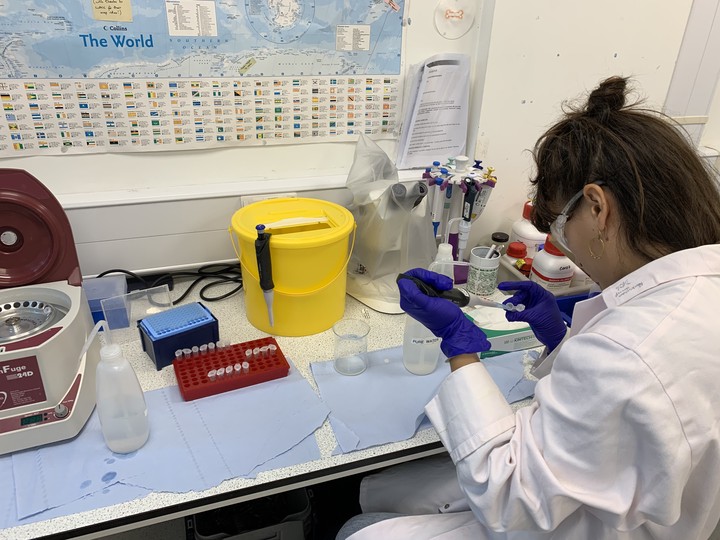SEAFRONT visits the NEaar-Labs in York

In October our research group visited the North East Amino Acid Racemization (NEaar) Lab at the Department of Chemistry of the University of York to date limpet shells using the AAR technique. During our two week visit, we had the opportunity to work together with the members of the lab of Professor Kirsty Penkman dedicated to providing amino acid racemization analysis. The very welcoming NEaar lab members helped us learn the technique and implement it to analyse our own samples from Franchthi.
Dating the shells from Franchthi with AAR will enable us to elaborate on the chronology of the site by combining our results with those of the already C14 dated layers of the site as well as with our high-resolution seasonality data.
What is AAR analysis?
Amino acid racemization (AAR) is a relative dating method that is quick, reliable and allows the low cost analysis of large sample numbers. It estimates the extent of degradation in intra-crystalline biomineral proteins (IcPD) of the carbonate samples, which is used to determine the relative age. This means that the age of the shell is retrieved by how molecules break down.
In total, 132 samples extracted from 66 shells were prepared for amino acid analysis during our research visit. These samples have been analysed with the use of a modified method of reverse-phase high pressure Liquid Chromatography (RP-HPLC), plenty chromatograms were produced and the interpretation of the results is underway.
Pipettes and more
Breaking down the molecules was fun and included lots of pipetting, bleaching, centrifuging, weighing and, of course, labelling of vials! After the samples were ready for analysis, they were inserted into the lab’s chromatographic instruments, Gilly and Hugh, who had even their own names and moods!
Acknowledgements
A warm thanks to all the members of the NEaar lab that hosted us for two weeks and especially Lucy, Sam, and Kirsty for their help. We look forward to the processing of our Franchthi chromatograms!

